Lovers, artists and millions of dollars - this is the story of Peggy Guggenheim - the greatest collector of the 20th century

Marguerite "Peggy" Guggenheim was born on August 26, 1898, in New York City, into a fabulously wealthy Swiss Jewish family, the daughter of Benjamin Guggenheim and Florette Seligman. The Seligmans were prominent bankers, and the Guggenheims had built their family fortune in the late 19th century mining and smelting metals, particularly silver, copper, and lead. Benjamin had a talent for making money, but he was not an exemplary parent; he had a restless spirit —he was home only sporadically and was far more interested in the Parisian clubs where he squandered the family fortune than his three daughters.
Fourteen-year-old Peggy's prosperous life ended in April 1912 when her father heroically perished on the SS Titanic during its maiden voyage from England to the United States. It was then revealed that Benjamin had already squandered a significant portion of his fortune, leaving his daughter "only" $2.5 million (the equivalent of $34 million today). While substantial, this sum, compared to the wealth of other family members, made Peggy more of a poor relative than a marriageable bride. Complicating matters further was the girl's less obvious beauty, which is why her uncle, renowned philanthropist Solomon R. Guggenheim , and other family members never believed Peggy would achieve success, constantly emphasizing her lack of talent, looks, or intelligence. It was then that she decided to do everything she could to escape her unfavorable relatives, starting with a job as a receptionist and taking an internship at a bookstore. She knew perfectly well that working women were not welcome in her circles.
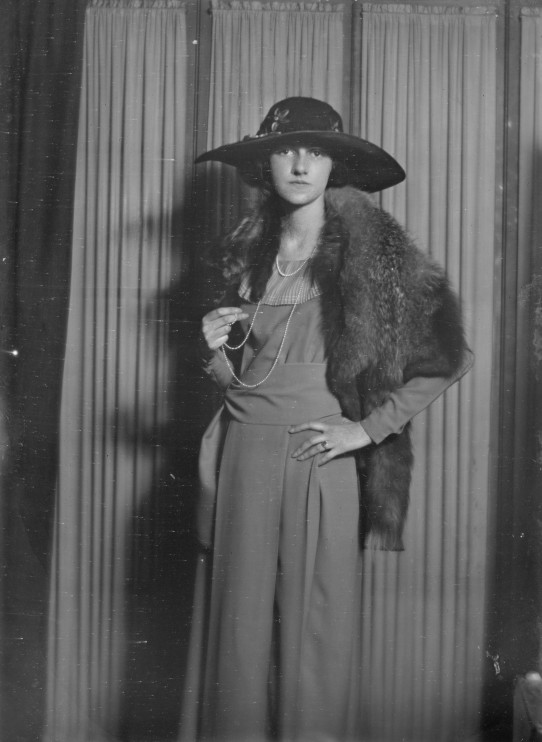 Miss Guggenheim - 1919 / Arnold Genthe / Heritage Images / Getty Images
Miss Guggenheim - 1919 / Arnold Genthe / Heritage Images / Getty ImagesFrom a young age, Peggy Guggenheim felt the need to express her individuality and explore the mysteries of art. She felt out of place in the conservative realities of life in the United States and was drawn to Europe. At 21, as soon as she gained access to her father's estate, she left for Paris, which was considered a hotbed of depravity by American society , but she felt at ease there, throwing herself into a whirlwind of romances with both men and women.
She received her artistic education in cafés, enjoying boozy discussions with Parisian artists, and her further development was aided by new friendships and fleeting relationships. Already in 1921, she met Marcel Duchamp, her longtime friend and advisor, whom she trusted implicitly in matters related to art.
In turn, thanks to the painter and writer Laurence Vail (her later husband and father of two children, Sinbad and Pegeen), her charisma and money, she became a star of the pulsating life of the French capital and the artistic bohemia.
Vail soon proposed to Peggy at the top of the Eiffel Tower , and their wedding took place in March 1922. The couple, who lived in their marital apartment with their infant son, were famous for organizing lavish parties – Laurence invited everyone from fellow artists to random passersby, courtesans, and tramps.
Laurence wasn't the ideal partner; he regularly cheated on Peggy, but it was he who introduced her to the artistic world and served as her mentor. The interwar period in Europe was a time when art exploded in various directions, including Surrealism, Cubism, and Abstraction, and thanks to her husband, Guggenheim was where something important was happening.
She befriended artists such as Salvador Dalí, Djuna Barnes, Constantin Brâncuși, and Duchamp. She was also a notorious figure in scandals and romances, and her list of over a thousand lovers included such luminaries as Samuel Beckett and Max Ernst. Her private life intertwined with her art, creating an extraordinary blend of emotion, passion, and determination.
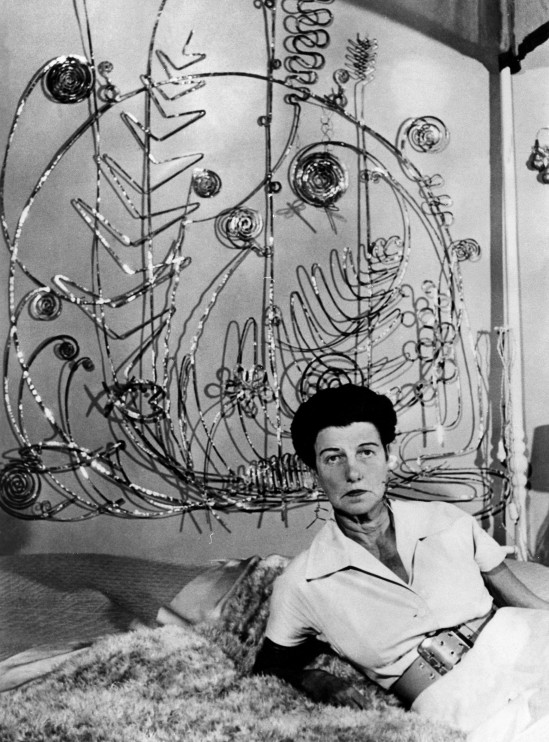 Peggy Guggenheim in front of a sculpture by Alexander Calder - 1961 / Getty Images / ullstein bild/ullstein bild
Peggy Guggenheim in front of a sculpture by Alexander Calder - 1961 / Getty Images / ullstein bild/ullstein bildShe moved to London not for love of art, but for a man. While vacationing in Saint Tropez, she met British writer John Holmes and fell completely head over heels for him. She divorced Vail, leaving her former life and her son, Sinbad, in Paris, under his father's care because, as she herself stated, she didn't know how to raise a boy.
She traveled to the capital of England with her daughter, Pegeen, and was finally happy – she had found the love of her life. However, at the end of August 1933, tragedy struck – John fell from a horse and broke his wrist. During the necessary surgery, John's weak heart prevented him from recovering from the anesthetic.
Peggy was devastated by the death of her beloved, remembering him fondly for the rest of her life, and sought solace in art. That same year, she purchased the first work for her collection: Jean Arp's sculpture Head and Shell.
When Guggenheim received another inheritance after her mother's death in 1937 , she opened the groundbreaking Guggenheim Jeune art gallery in London, at the age of thirty-nine, launching a career that would significantly influence the course of postwar art. Her friend Samuel Beckett urged her to devote herself to contemporary art because it was "a living thing," and Duchamp introduced her to artists and taught her, as she put it, "the difference between abstract and surrealist art."
The very first opening, during which guests could admire the works of the then little-known Wassily Kandinsky, proved to be a hit. Other artists exhibiting at the Guggenheim Jeune included Hans Arp, Georges Braque, Marcel Duchamp, Max Ernst, Juan Gris, Joan Miró, Piet Mondrian, Picasso, and Yves Tanguy.
Despite this, the gallery was losing money, and Peggy's thoughts turned to founding a museum, similar to those of her uncle, who, at almost the same time, created the famous foundation and then the iconic Guggenheim Museum.
In 1939, Peggy began working with British art historian Herbert Read, who was chosen to direct her dream museum. The collection was to be based on a list of artists compiled by him and subsequently revised by Duchamp and Nelly van Doesburg, the widow of Dutch artist Theo van Doesburg . However, her plans were thwarted by the war.
In 1939–40, Peggy returned to Paris and, with Herbert Read at her side, diligently acquired works for her collection, buying one painting a day. During these turbulent times, she acquired many masterpieces, including works by Georges Braque, Salvador Dalí, Robert Delaunay, Constantin Brâncuși, and Francis Picabia.
This was facilitated by the fact that German troops were approaching the French capital, and artists and collectors were keen to sell quickly – if it were not for the threat of imminent occupation, it would have been impossible for them to acquire over 100 works by leading avant-garde artists for the ridiculously low price of $40,000.
When anti-Jewish policies spread to France, Paris ceased to be a safe haven for Peggy. The collector was primarily concerned about her art, so she reached an agreement with the Louvre to house her collection. However, the Louvre backed out at the last minute, claiming that Guggenheim's art was too modern.
In July 1941, Peggy used her connections and fled to her native New York City with her children, Laurence Vail, his second wife Kay Boyle, and their children, as well as Max Ernst, who would soon become her second husband. The art collection arrived in the States, hidden in crates among blankets and sheets.
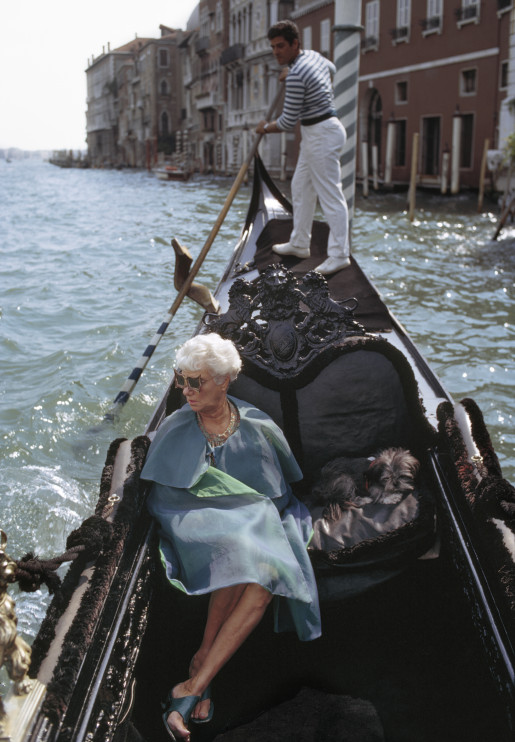 Peggy Guggenheim in Venice - 1968 / Getty Images / Tony Vaccaro
Peggy Guggenheim in Venice - 1968 / Getty Images / Tony VaccaroShortly after returning to New York, Peggy opened another art gallery. Previously, she had organized art exhibitions in her apartment, often accompanied by alcohol and drugs, but her New York apartment quickly became too small for her growing collection.
In October 1942, Peggy opened the Art of This Century gallery-museum in Manhattan at 30 West 57th Street. She wrote about the opening night:
- I wore one of my Tanguy earrings and one made by Calder to show my impartiality between surrealist art and abstract art.
In the gallery interiors designed by Marcel Duchamp , Peggy exhibited her collection of cubist, abstract and surrealist art and organized temporary exhibitions of leading European artists.
She also showcased the work of many young, then-unknown Americans, such as William Baziotes, David Hare, Robert Motherwell, Robert de Niro Sr., Jackson Pollock, Richard Pousette-Dart, Mark Rothko, and Clyfford Still. Although her professional life was quite successful, her personal life was in trouble – her marriage to Max Ernst ended in failure , and her subsequent affairs with men only confirmed that they cared only about her money and influence.
It was at Peggy's New York gallery that the careers of American contemporary artists such as Jackson Pollock were born. She met him while he was still working as a carpenter at her uncle's foundation. She didn't immediately fall in love with the Wyoming craftsman's art; she called his paintings "terrible," but she was convinced of the painter's genius by Piet Mondrian, who said:
- I feel like I'm looking at some of the most exciting work I've ever seen in America.
Peggy then offered Pollock a $150-a-month stipend in exchange for everything he painted. She also gave him the first of four solo exhibitions, actively promoted and sold his paintings, and commissioned his greatest work, "Mural" (1943), which she later donated to the University of Iowa.
Pollock and his fellow artists were among the pioneers of American Abstract Expressionism, one of the sources of this movement being Surrealism , which the artists encountered in Art of This Century. An additional motivation was the support that Peggy, along with her friend and assistant Howard Putzel, provided to members of the emerging New York avant-garde.
In this way, the Guggenheim and its collection played a significant mediating role in the development of the first American art movement of international significance.
Peggy also actively supported women artists. In 1943, she organized the first exclusively "women's" exhibition, featuring works by Frida Kahlo, Leonor Fini, and Leonora Carrington, among others.
Despite her success, she still did not feel comfortable in her native America, especially after Ernst left her for Dorothea Tanning, and she published a book about her love affairs, which ended in a moral scandal.
In 1947, she packed her collection and returned to Europe – this time her choice fell on Venice, which Laurence Vail had shown her in her youth.
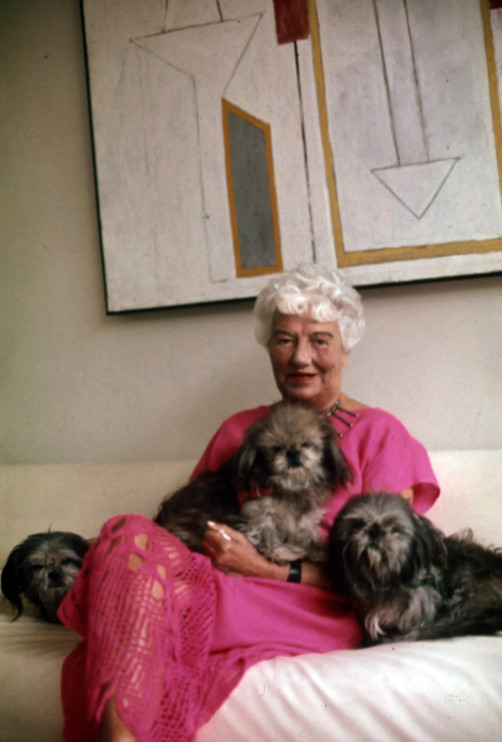 Peggy Guggenheim in Venice - 1979 / Gould/IMAGES/Getty Images
Peggy Guggenheim in Venice - 1979 / Gould/IMAGES/Getty ImagesIn 1948, Peggy exhibited her collection for the first time in the Greek Pavilion at the Venice Biennale. This marked the first time in Europe that works by artists such as Arshile Gorky, Pollock, and Rothko were presented. The presence of Cubist, Abstract, and Surrealist art made the pavilion the most coherent survey of Modernism ever shown in Italy, and it was largely thanks to the Guggenheim that Venice gained its status as a city of modern art.
In Venice , Peggy's dream of establishing an art museum finally came true. Italy was slowly recovering from the war that had devastated the country, and many descendants of illustrious families were selling off their estates.
That's how, for almost nothing, the collector acquired the Palazzo Venier dei Leoni, an unfinished mid-18th-century building on the Grand Canal, where she spent the rest of her life.
Her collections traveled to Florence and Milan, and later to Amsterdam, Brussels, and Zurich. From 1951, Peggy also opened her home to the public several afternoons a week—in the spring, summer, and early fall months. During her Venetian years, she continued to collect art and supported artists such as the Italians Edmondo Bacci, Piero Dorazio, Tancredi Parmeggiani, and Emilio Vedova. In 1962, she was awarded the title of Honorary Citizen of Venice.
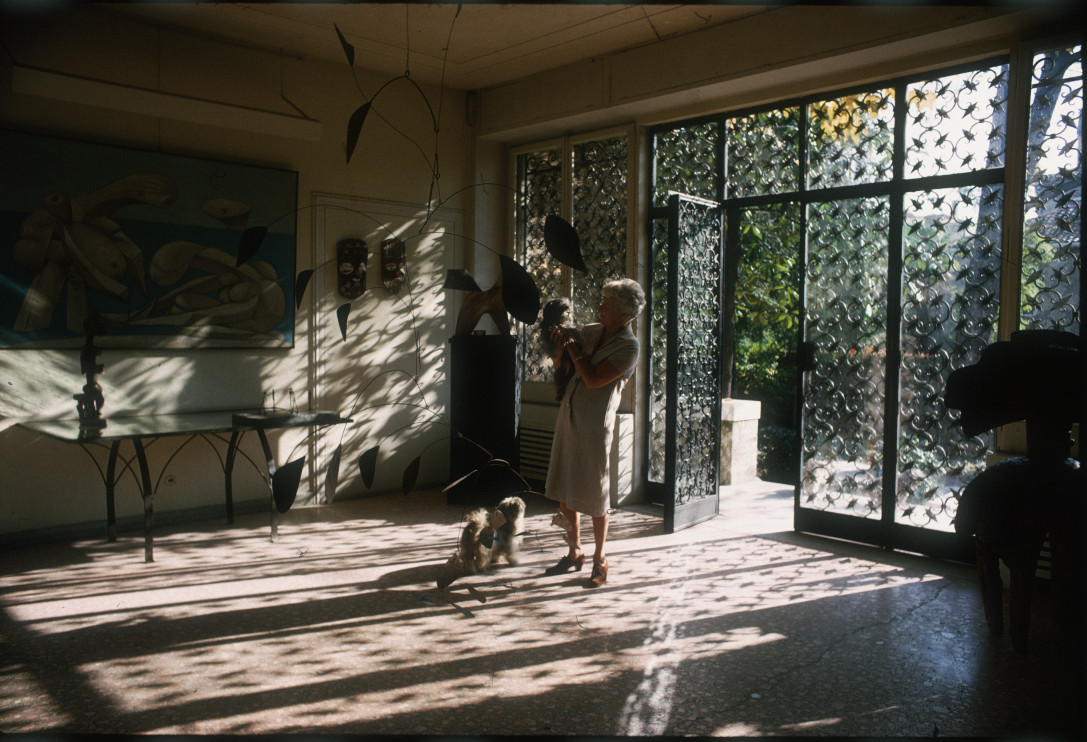 Peggy Guggenheim in Palazzo Venier dei Leoni in Venice - 1941 / Getty Images / David Lees/Corbis/VCG
Peggy Guggenheim in Palazzo Venier dei Leoni in Venice - 1941 / Getty Images / David Lees/Corbis/VCGNumerous institutions sought Peggy's collection. Although she was eager to share her art, she set a condition: after her death, the works must remain in Venice. One of the few institutions with the funds to make such a commitment was the Solomon R. Guggenheim Foundation – it was to this foundation that Peggy donated her palace in 1970 and her entire collection in 1976.
Thus, history has come full circle, siding with the “ugly, less talented and intelligent relative” who has had a significant influence on the current shape of global contemporary art.
Peggy Guggenheim died on December 23, 1979, at the age of eighty-one, of a stroke, leaving behind the Peggy Guggenheim Collection in Venice, founded by the Salomon Foundation and still operating today. The artworks, on which the collector spent approximately $250,000 during her lifetime, are now estimated at over $350 million.
Today, Peggy Guggenheim is a symbol of a liberated woman living in harmony with her desires.





